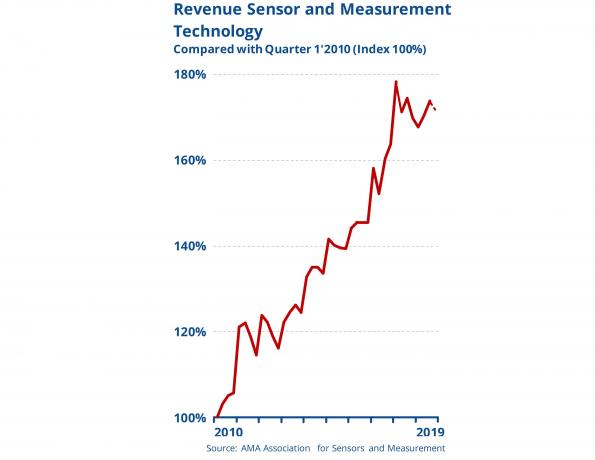

Contents:


Accounting Accounting and bookkeeping basics you need to run and grow your business. Small Business Stories Celebrating the stories and successes of real small business owners. You can correct rejected filings and resubmit them rather than having to start over from scratch.

Your staff should be aware of the upcoming change and know the general guidelines around document sharing, permissions, storage rules, etc. Following standard procedures, and naming conventions should also help when employees start using the new system. Your traditional system can hold all your long-term papers such as prior years‘ taxes, permits and business licenses, and intellectual property registrations. You can use a digital system to store your ideas, such as Evernote, and track projects. Chances are you’ll need to use more than one system to manage all the data and material you need to store in your business.
Making these considerations means you’ll store things in a way that makes the most sense for your daily work life. At the same time, rigorously implement the organizational system you selected above. Sam Zietz, CEO of Grubbrr, a technology company that sells POS systems, ordering kiosks, and mobile ordering for businesses, says it should be one of the easiest things a business owner can do. Zietz emphasizes that for business owners, SITCA should be a big win. “You would have your audit trail right there to be able to provide to the government, and that would alleviate any liability for the business owner,” he says. You don’t need to do this on a daily or even weekly basis, but it’s a good idea to set up recurring times to do a health check and declutter.
Several papers are produced in an office daily that can be requested by various authorities anytime. Importantly, the names of your files also need to make sense, so when your people are searching for the files they need they can find them quickly and easily. Since each business has different types of documents that need to be sorted, it’s important to customize the system to your own needs. That means you need to set aside some time to actually go through the items you need to organize and think about the categories you may want to include. But there are some commonalities between most solid filing systems. Here are some expert tips to help you set up your system and stay organized for years to come.

The provision that barred the normal balance from exploring a free-file system expired in 2019, but the Free File Alliance agreement to provide free services for low-income taxpayers remains in effect. But big tax preparation companies have millions of dollars to lose if the program comes to fruition. Last year, more than 60 million taxpayers were serviced between Intuit, the parent company of TurboTax, and H&R Block. During your brainstorming session, you should go through all of the documents you currently have and use in your business. This can help you come up with some general categories or files that you’ll need to create.
Use a straightforward file name so that you can search for and find the document you need without opening the files themselves. Perhaps that booklet about your insurance policy can be relegated to a locked filing cabinet—you almost never look at it. But maybe you want the client contracts that you reference frequently to be within easy reach in an accordion file in your desk drawer. It’s time to establish a system you can stick with—and invest in the tools to help.
Filing systems are the need of every organization to keep memos, circulars, bills, and other important documents and data safe. Even in this digital world, it’s surprising how much paper a home business can accumulate. Further, there is so much to track in a home business, such as your financial accounts, marketing strategies, projects, customers, and more. It’s essential to develop organizational systems early in your business to ensure you’re able to find what you need when you need it. Therefore, it is important to organize an office filing system. Let me tell you how to create an effective filing system so you can save everyone’s time.
01122023 RRC Hosts Webinar Form CI-D Form CI-X Online Filing ….
Posted: Thu, 12 Jan 2023 08:00:00 GMT [source]
According to zenhabits, that is the first rule to simplifying your filing system. Secondly, the filing system should be simple and performed once or twice a week. It’s that time of year when throngs of taxpayers are buckling down to file their income tax returns before Tuesday’s filing deadline. Office files are collective resources, so it makes sense that organizing them should be a collective responsibility. While you may have ambitious plans for keeping the office filing system in a perfectly organized condition, everything could fall apart if, and when, you get busy. This system ensures files stay organized by category instead of piling up in a haphazard heap.
If different team members, collaborators, and business partners all have access to different parts of your filing system, make sure you know who can see what files and who can access them. It’s a really important part of maintaining a safe, secure online work environment. This simply means that your key managers and leaders, all of your team members, will be able to find everything that they need too, wherever they are.
As I said before, you can choose to file the information numerically, alphabetically, or by subject. For example, you should file account numbers numerically, whereas you can categorize financial documents under expenses, financials, and marketing. The initial step to organizing an office filing system is assessing personal and office habits. This involves the documents frequently needed and those that can be archived for longer periods. As a result, a good document filing system should enable quick access to those files in the future.
Office filing systems come in all forms, from the simple cabinet drawer, to complex assortments of digital servers. In order to create a system that works for you, it’s important to know what files are most important, who needs access, and how they can be retrieved easily and efficiently. This organizational technique is the perfect way to turn piles of paper into orderly packages that are predictable in the best possible way. Best of all, color coding works on both physical and digital files, and if you need to organize both types of files, you can easily use the same color coding system for each. If you have essential paper-based documents that must be retained permanently, create a dedicated place within your filing system for those documents.
The tools and resources you need to take your business to the next level. The tools and resources you need to run your business successfully. The tools and resources you need to get your new business idea off the ground.
Keep the two types of information separate in your business filing system. Whether you’re a business, big or small, or are self-employed you’ll find an e-file for business filing option that meets your needs. Use IRS e-file for Employment Tax Returns, Information Returns, Partnerships, Corporations, Estates & Trusts, plus Exempt Organizations. To get yourself and your business on the right track, follow five steps to make sure papers are easily accessible and easily identifiable.
It is usually used in large offices to cater to massive amounts of data. Traditional filing systems are the ones that have been used since the beginning and are still operated in some organizations according to the need. They cannot be completely removed from the filing systems, and they provide a purpose in some places. There are five types of traditional filing systems, some of which are outdated, while some are still in utilization. A filing system may be simply defined as the method of gathering and categorizing data for easy access when needed.
These systems also protect your documents from potential breaches and other security risks. Filing is an important part of any organization as it allows you to keep all data save and accessible. Like everything else around us, filing systems have also evolved in the past centuries and decades, providing more options to classify and file data according to your preference.
For small businesses that don’t generate too much paperwork, the binder system is a good choice. It’s also ideal for people who like to have everything in one place or who need their information to be mobile. The binder system uses a large three-ring binder, sheet protectors, and section dividers.
If your business is fairly simple, your record-keeping may be limited to payroll and accounting, but you still need to be able to operate at your desk swiftly and easily. Add any expected completion dates to your calendar so you’ll know when it’s time to go in and do some organizing. This genius tip from Mind Tools simplifies the entire filing system. You can still organize files for completed projects, but separating them from files related to ongoing work will make finding files much faster and more efficient.
Here’s what a free IRS e-filing tax return system could look like.
Posted: Wed, 22 Feb 2023 08:00:00 GMT [source]
Since large amounts of user data are generated every day in an office, a filing system helps to manage it. Not only does it involve storing and retrieving data, but also updating it. By sorting documents into related subgroups, everyone in the office can approach the categories that suit their purpose.A document filing system should follow specific guidelines. For instance, before organizing the documents, you should eliminate unnecessary papers.

Partnerships that rely upon third party tax professionals to prepare and transmit their tax returns should consult their tax professional. Think about which employees need access to files, where they work, and what makes sense based on their work stations. If you are creating a system for someone else, get their input—what works for one person won’t always work for another. Even the best office filing system won’t stay organized by itself. It’s best to keep this in mind and plan to do a little bit of work keeping the system organized on a weekly basis.
Colored hanging folders are easily available and easily recognizable. Filing receipts and invoices properly is one of the most important things a small business can do for its financial health. A nonexistent or messy filing system can add days of extra effort at income tax time, and you don’t want to miss out on tax deductions because of missing receipts. If you are ever subject to an audit and unable to produce the required documents on time, your claims can be rejected and your tax return re-assessed. This may seem like a cheat, but one of the best ways to organize an office filing system is to reduce the files you need to organize. You can start by collecting all your documentation and sorting them into major categories like accounts receivables, payables, information, legal etc.